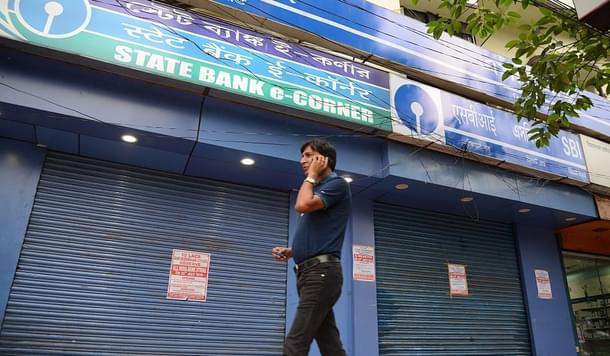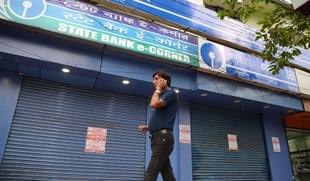Business
India Inc’s Urge To Merge May Be More Value Destructive Than Productive
R Jagannathan
Feb 20, 2017, 11:22 AM | Updated 11:21 AM IST
Save & read from anywhere!
Bookmark stories for easy access on any device or the Swarajya app.


The urge to merge is gripping India Inc. Both the public and private sectors have caught the virus. Last week, the Union cabinet cleared the merger of State Bank of India (SBI) with its five remaining subsidiaries. In the Union budget, Finance Minister Arun Jaitley promised that state-owned oil companies will be merged to create greater clout and value.
In the bleeding telecom sector, while Reliance Communication, Sistema and Aircel have already done half the job in a three-way merger (the Aircel part is still pending a Supreme Court verdict in a corruption case), there is talk that Tata Teleservices is open to the idea of making this a messy foursome. But the big daddy of telecom mergers will be Vodafone and Idea Cellular, which will create India’s No 1 telco if it happens.
Elsewhere, the consumer durables sector – reeling under weak consumption growth made worse by demonetisation – has just seen Havell’s, market leader in consumer electricals, cables and wires, buy Lloyds’ consumer durables business for Rs 1,600 crore.
Over the previous two years, we have seen consolidation in the form of asset and share sales happening in the cement, power, oil, infrastructure and aviation sectors, driven largely by the need of some groups to reduce debt. Among them: Jaiprakash (cement and power), Ruias (oil refining), GVK and GMR (infra and aviation). Real estate, a shadowy sector at the best of time, has not seen companies seeking to merge, but asset sales have been the norm. The biggest listed company, DLF, has been in continuous asset sale mode to pare down debt. No sector has probably destroyed more value than the listed realty sector. So the worst is not over.
The current wave of mergers and divestitures is thus led more by necessity and distress than by opportunity, except in the oil and cement segments. This means, weakness rather than strength is the driving logic.
The SBI merger is intended to accumulate size and cut costs at a time when bad loans are a huge issue. It will take at least two years to digest, and the bad loan problem will just accumulate in one basket instead of six.
The telecom mergers are the result of the industry’s huge debt overhang and the sharp drop in revenues and margins following the entry of an 800-pound gorilla in the form of Jio. By the end of 2017, we are unlikely to have more than four telcos left, apart from the state-owned BSNL and MTNL. They will probably become basket cases like Air India.
In aviation and infrastructure, debt is killing the companies, and they have no option but to seek exits and firesales. GVK sold a large chunk of its Bangalore airport holdings to cut debt, but the debt problem is nowhere near ending. The GMR group, which runs Delhi airport, saw the rating agencies downgrade some of its companies to default status in 2015. It is still not out of the woods. But divestiture has not made airport companies any less risk-averse. Both GVK and GMR bid for the Navi Mumbai airport, and the former won with a promise of over 12.6 per cent revenue share to the land developer (Cidco). The Rs 16,000 crore project will surely increase GVK’s debt, with the winner’s curse forcing it to look for more divestitures to feed this albatross.
Worldwide, mergers and acquisitions have destroyed more value than they created, with two out of three failing to deliver on promises. It is unlikely to be any different with our own rash of mergers. This is because mergers are marrying people and cultures, two things that are very difficult to manage. The current wave of shotgun mergers forced by circumstances is unlikely to be any easier to manage. So one should expect much heartburn and value destruction before something worthwhile emerges from these initiatives.
For example, Havells, which has margins or 24 per cent in its consumer business, is acquiring Lloyds with margins under 8 per cent. So shareholder value will surely be dented in the short run.
It is perhaps only in the oil sector, where all the merging companies are government-owned, and hence there is no question of any collective overpayment for acquisitions, that one can expect value-accretion. Even here the government would do well to avoid creating one monolith oil company, and instead opt for two or three more integrated and nimble giants.
The three nodes will have to be Oil and Natural Gas Corporation (ONGC), Indian Oil, and GAIL, with ONGC needing stronger refining and marketing strengths (adding Bharat Petroleum Corporation Limited and Hindustan Petroleum Corporation Limited, or Kochi Refinery and Chennai Petro would help), while Indian Oil needs a stronger exploration and prospecting arm (possibly Oil India). GAIL, which is into pipelines and piped gas retailing, should ideally be acquiring private piped gas companies, since it may not have many synergies with oil prospecting and refining companies. The only real synergy is to get ONGC to acquire it, since much of its gas comes from its offshore fields. Another option would be to merge Bharat Petroleum and Hindustan Petroleum to create a new marketing powerhouse to provide competition to Indian Oil and Reliance Petroleum. Ideally, they should be privatised, but this will require a law change, which may not pass in the Rajya Sabha.
The oil mergers, if not pushed through mindlessly, should work since these companies share the same DNA and are mostly good at what they do. They are manned by professionals, and do not carry an excess of manpower – at least, not at unmanageable levels.
As for the non-oil merger mongers, it is best to keep one’s fingers crossed.
Jagannathan is former Editorial Director, Swarajya. He tweets at @TheJaggi.





